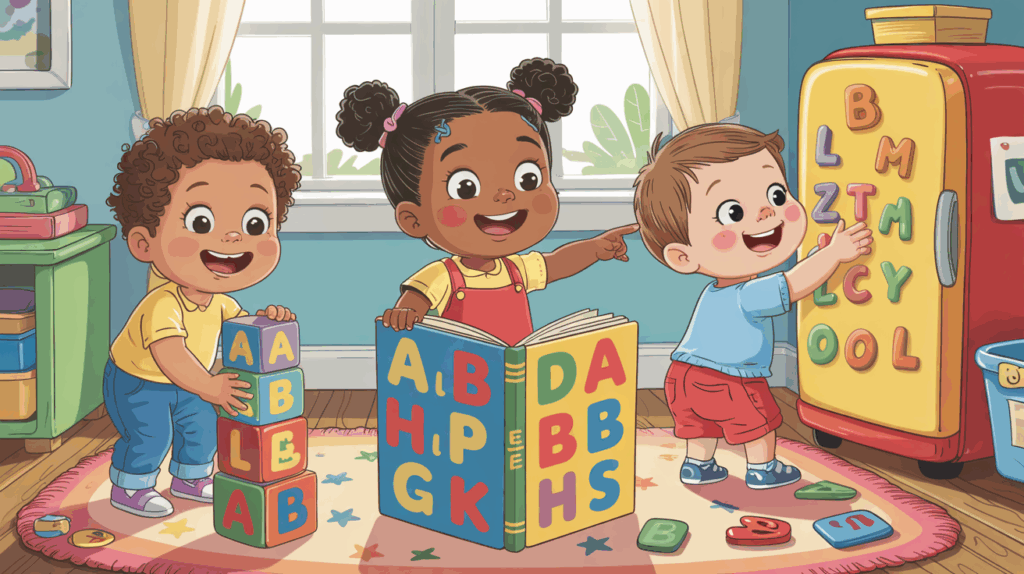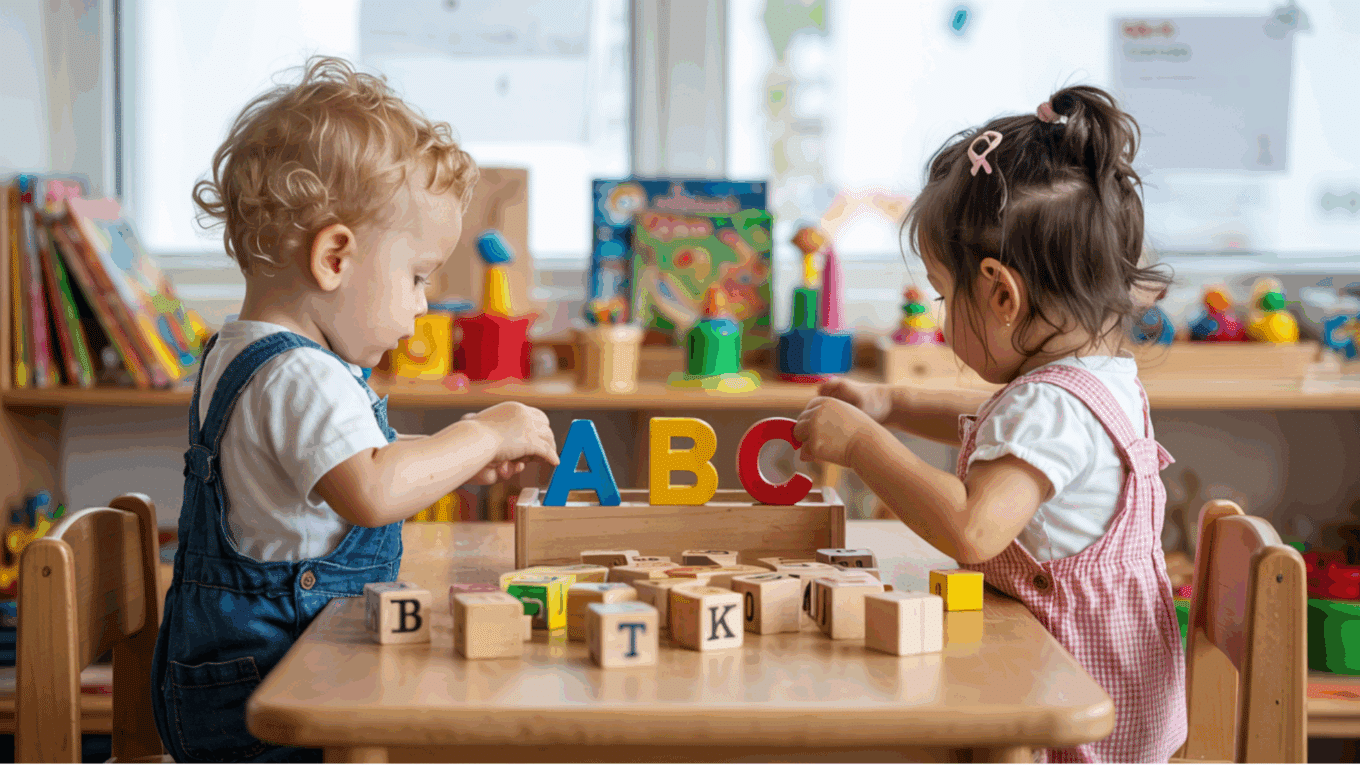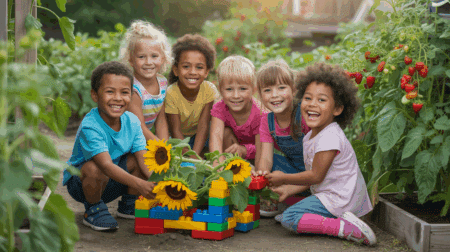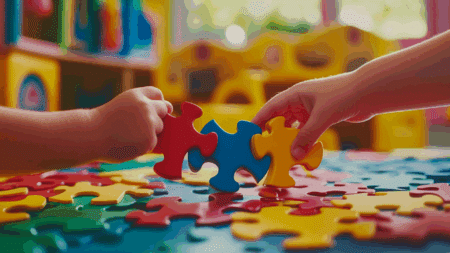As a parent, you’ve probably wondered when your child will start recognizing letters. It’s an exciting milestone, but the truth is, each child learns at their own pace, and that’s completely fine.
You might notice that some kids are already singing the alphabet by age three, while others take a little longer.
In this guide, we’ll talk about what you can expect when it comes to letter recognition at age 3. I’ll share what’s typical, ways to help your child get there, and tips for tracking progress.
If your child is ahead or just starting, you’ll find simple ideas to support them on their learning path. Let’s jump in!
What Should a 3-Year-Old Know Academically?
At three years old, children are eager learners, absorbing all kinds of information from their environment. They are beginning to recognize shapes like circles, squares, and triangles, and can often name common colors like red, blue, and yellow.
Many kids start to understand simple concepts related to numbers, such as counting to 10 and recognizing the number symbols.
In addition to these basics, some children may begin to show interest in letters and even start recognizing a few of them, especially the ones in their names.
However, it’s important to remember that each child’s development is different, so while one child may be able to recite the alphabet by three, another might just be starting to recognize a few letters.
The key is to encourage their natural curiosity and provide them with opportunities to check these concepts in a fun and relaxed way.
Engaging with them through songs, books, and playful activities can help them develop these skills over time.
Letter Recognition at Age 3: What to Expect

Most three-year-olds are just beginning their alphabet adventure. Research suggests that around 20% of children at this age might recognize a few letters.
The most common letter they know? Often, it’s the first letter of their own name.
The Path of Letter Learning
Children typically start their letter recognition journey with:
- Identifying letters in their name
- Recognizing some uppercase letters
- Showing curiosity about written words
- Connecting letters to familiar objects or sounds
Fun Ways to Introduce Letters to 3-Year-olds
Here are some engaging activities to help your child learn letters:
- Alphabet Books: Read colorful books that make letters exciting.
- Name Games: Point out letters in your child’s name everywhere you see them.
- Everyday Letter Spotting: Look for letters on street signs, product packages, and clothing labels.
- Magnetic Letter Play: Use refrigerator magnets to create interactive learning moments.
- Alphabet Songs: Sing catchy tunes that make learning letters fun.
Supporting Reluctant Learners
Not all children show immediate interest in letters, but with some creative approaches, you can spark their curiosity:
- Make Learning Fun: Turn learning into a game. For example, create a treasure hunt where your child finds objects that start with certain letters. Keep it fun and stress-free.
- Use Educational Apps: Interactive apps with bright colors and sounds can make letters more engaging for young learners. Just balance screen time with hands-on activities.
- Daily Letter-Finding Games: While doing daily tasks, like shopping, ask your child to find items that start with specific letters. This turns regular moments into learning opportunities.
- Connect Learning to Their Interests: Tie letter learning to things your child already loves. For example, use animals, cars, or favorite toys to teach letters and their sounds.
- Read Together: Choose alphabet books and encourage your child to point to letters as you read. Interactive books can also keep them engaged.
- Sing Songs: Singing the alphabet song or rhyming songs helps children remember letters and their sounds.
- Celebrate Progress: Be patient and celebrate small steps, whether it’s recognizing a letter or showing interest in the activity.
- Try Different Materials: Use different learning tools like magnetic letters or puzzles to keep things fresh and interesting.
- Letter of the Week: Focus on one letter each week and explore it through books, songs, crafts, and activities.
- Stay Positive: Keep a positive attitude and avoid putting pressure on your child. Praise them for their effort, not just the outcome.
Tracking Your Child’s Progress
Watch for these signs that your child is making progress with letter learning:
- Pointing out familiar letters: As your child becomes more familiar with letters, they may start pointing out letters they recognize in their environment, such as those in their name or on familiar objects like signs or books.
- Showing excitement when recognizing letters: When they recognize a letter, your child might show excitement, such as saying, “That’s the letter A!” or pointing to letters they’ve learned.
This reaction shows that they are starting to connect letters with their world. - Attempting to write or draw letter-like shapes: Your child may try to draw shapes that resemble letters, even if they’re not perfect. This might include scribbling lines or circles that look like the letter “O” or “T.” These early attempts help develop their fine motor skills and understanding of letter formation.
- Asking about letters they see: If your child starts asking questions like “What is this letter?” or “What does this letter sound like?” it indicates curiosity and a growing interest in understanding the alphabet and its role in words.
Summing Up
It’s important to remember that each child’s learning journey is unique.
Some kids will catch on to letters quickly, while others may need more time. The key is to keep things fun and relaxed. Celebrate their progress, no matter how small, and stay patient as they grow.
As you continue supporting your child, they’ll start recognizing more letters and connecting them to sounds. Keep reading together, playing with letters, and encouraging their curiosity.
Your presence and encouragement are all they need to thrive. If you’re looking for more ideas to support your child’s learning, feel free to check out other blogs on the website.
There’s always something new to Learn!




